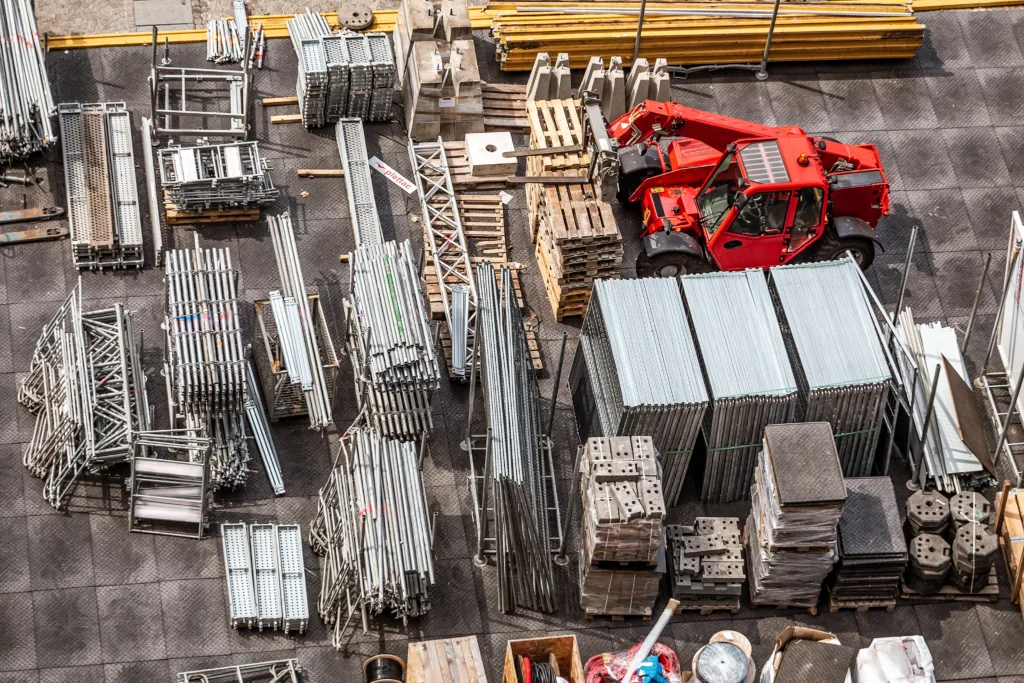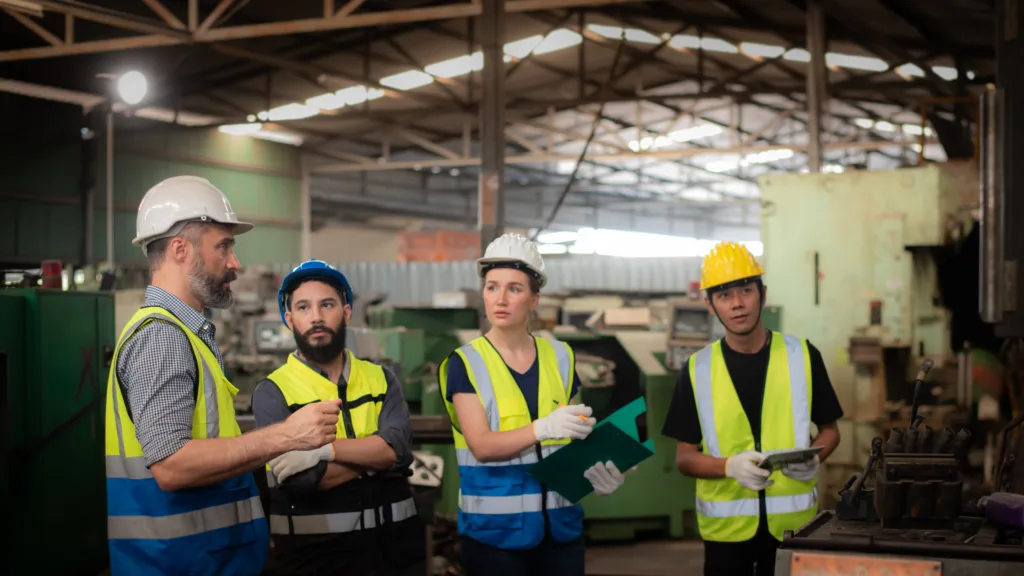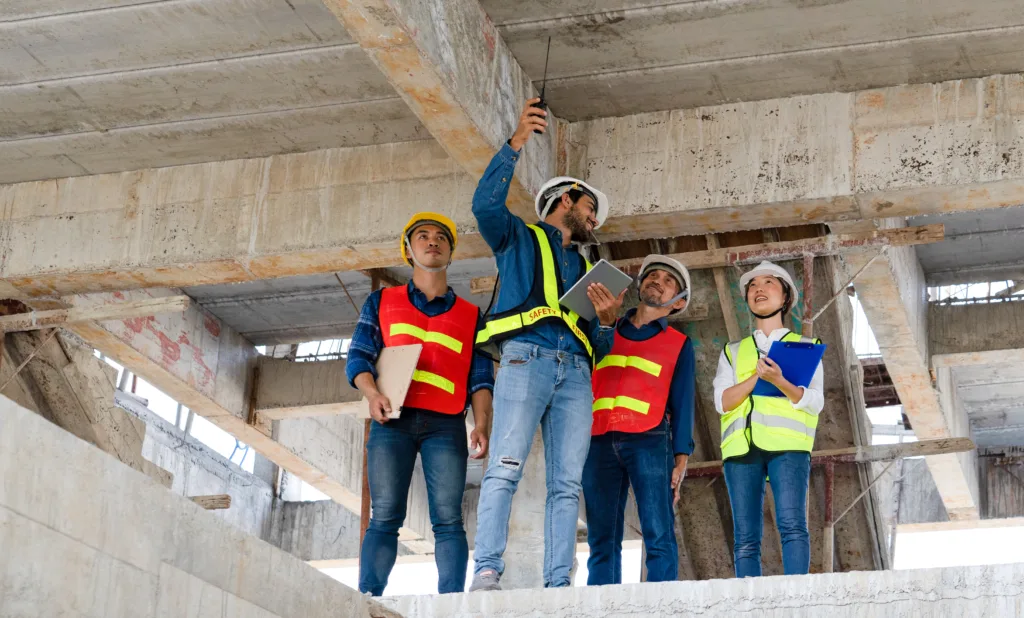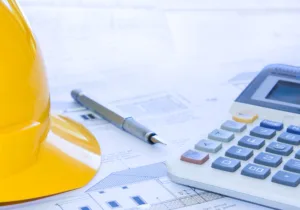In the dynamic construction world, every project manager knows the familiar dance of balancing deadlines, budgets, and quality. As each project unfurls, the complexities become more apparent, potentially steering your endeavors off course. So, how do you ensure that your construction projects remain firmly on the path to success?
The answer is more straightforward than you might think: Stay proactive, informed, and adaptable. By weaving together a tapestry of clear communication, technological tools, daily monitoring, and robust planning, you can easily navigate the unpredictable waters of construction. Throughout this article, we will delve into twelve indispensable tips crafted to keep your construction projects on track and elevate them to new heights of efficiency and effectiveness. Let’s embark on this journey together and turn those construction challenges into triumphs!
How to keep construction projects on track
Learn these 12 tips to keep your construction projects on track better.
1. Detailed Planning Ahead of the Start Date

Have you ever tried baking a cake without a recipe? Or set out on a road trip without a map? It’s a thrill, sure, but also a recipe for chaos! In the world of construction, diving in without a detailed plan is not just risky—it’s downright dangerous. Careful planning before the start date is the secret ingredient that can steer your project away from potential pitfalls and toward success.
The golden rule? Fail to plan, plan to fail.
So, why is pre-start date planning such a game-changer? Let’s dig in:
- Clarity and Vision: When you map out every stage, you’re not just working with bricks and mortar. You’re crafting a vision, brick by brick.
- Resource Optimization: Planning helps you allocate resources efficiently. You know what you need when you need it and in what quantity.
- Risk Mitigation: With a plan, you can foresee potential challenges and set up countermeasures in advance.
- Stakeholder Alignment: A clear plan ensures everyone, from your client to the site worker, is on the same page.
Convinced about the power of planning? Here’s how to make it work for you:
1. Set Clear Objectives: Before anything, know your endgame. What are you looking to achieve? Nail down those goals.
2. Break It Down: Chunk your project into stages. From site preparation to final touches, visualize every step.
3. Time is Money: Draft a realistic timeline. And remember, it’s not just about how long a task takes but also how tasks interplay.
4. Budget Wisely: Finances can be tricky. Allocate funds for every stage, keeping a buffer for those unexpected expenses.
5. Engage Your Team: A plan isn’t a one-person show. Involve your team, gather feedback, and refine.
6. Revisit and Refine: Plans aren’t set in stone. As you progress, keep revisiting. Adapt and refine based on on-ground realities.
In essence, detailed planning is your project’s North Star. It guides, directs, and, most importantly, gives you the confidence to navigate the choppy waters of construction. So, before you lay that first brick, lay out that plan. Because in the grand construction orchestra, planning isn’t just a note—it’s the entire symphony! 🎶🏗️
2. Pinpointing Your Project’s KPIs: The Roadmap to Success

Navigating the intricate maze of a construction project without a clear roadmap is like setting off on a cross-country journey without a GPS—you’re bound to get lost. In construction, your Key Performance Indicators (KPIs) act as this invaluable roadmap, guiding every move, decision, and strategy.
But first, what exactly are KPIs? Think of them as the vital signs of your project’s health—quantifiable metrics that reflect the effectiveness, efficiency, and success of various facets of your undertaking. Whether it’s gauging your team’s productivity, measuring resource utilization, or assessing project profitability, KPIs give you the insights you need.
Here are some pivotal benefits of honing in on your KPIs:
- Clarity in Vision: Setting clear KPIs allows you to outline what success looks like. This provides direction and aligns the entire team toward a common goal.
- Timely Decision-Making: By regularly monitoring your KPIs, you can detect anomalies or deviations in real time, enabling prompt interventions and adjustments.
- Increased Accountability: KPIs demystify project performance. When every team member knows the benchmarks, it fosters a culture of responsibility and motivation to meet or even exceed those standards.
Consider these popular KPIs in the construction sector:
1. Schedule Variance: This compares the project’s progress to the original plan. If you’re falling behind, it’s a precise sign adjustments are needed.
2. Cost Performance: You can spot financial inefficiencies quickly by comparing the budgeted work cost with what’s been done.
3. Safety Incidents: A critical KPI, it reflects the safety practices and procedures, aiming to minimize accidents on the job site.
In essence, KPIs are your project’s North Star, illuminating the path and ensuring every step you take is in the right direction. By pinpointing and meticulously tracking them, you’re setting your project up for completion and outstanding success.
3. Investing in Quality Equipment and Materials

Ahoy, builders, and creators! Picture this: you’re crafting the most intricate, detailed sandcastle on the beach. You’ve got the vision, the plan, but then—snap! Your shovel breaks, or worse, the sand’s too coarse and crumbly. Heartbreaking, right? Similarly, even the best plans can crumble in the grand theater of construction if the materials and equipment don’t measure up. Investing in quality isn’t just a choice; it’s the cornerstone of excellence.
Here’s the lowdown: Good equipment and materials don’t just build structures; they build trust, reputation, and legacy.
Why, you ask? Let’s unravel the magic of quality:
- Longevity and Durability: High-quality materials stand the test of time. They resist wear and tear, giving your projects a longer lifespan.
- Safety First: Top-notch equipment minimizes the risks of accidents and mishaps on-site. It’s an investment in the well-being of your crew.
- Cost Efficiency in the Long Run: While quality might initially come with a higher price tag, it saves money in the long haul by reducing maintenance and replacement costs.
- Happy Clients, Every Time: Client satisfaction soars when your projects exude quality. A job well done translates to glowing recommendations and repeat business.
Eager to weave quality into your construction tapestry? Here’s your action plan:
1. Research, Research, Research: Before purchasing, dive deep. Read reviews, seek expert opinions, and test if possible.
2. Forge Solid Supplier Relationships: Foster connections with trusted suppliers. They can often guide you toward the best choices and offer valuable deals.
3. Quality Checks: Don’t just take suppliers at their word. Implement rigorous quality checks for every batch of materials.
4. Train Your Eye: Sometimes, spotting quality is an art. Attend workshops, seminars, or courses that help hone this skill.
5. Maintenance is Key: Quality equipment needs love and care. Regular maintenance ensures not only longevity but also optimal performance.
In the grand mosaic of construction, every brick, beam, and bolt plays a role. By investing in quality, you’re not just building for today but also crafting legacies for tomorrow. So, the next time you’re faced with the choice between cost and quality, remember: great builders don’t cut corners, they polish them! 🌟🛠️
4. The Power of Daily Reports: Keeping a Finger on the Pulse

Imagine trying to read a captivating novel, but pages are missing, leaving gaps in the storyline. Frustrating, right? Similarly, in construction, missing out on day-to-day updates creates puzzling gaps that can throw your entire project narrative off course. Daily reports bridge these gaps, ensuring a continuous, unbroken account of your project’s journey.
Here’s why these reports are akin to daily health checkups for your project:
- Instant Insights: Daily reports spotlight the project’s daily activities, allowing you to assess productivity, identify bottlenecks, and recognize achievements instantly.
- Risk Management: Recognizing problems when they’re small is crucial. These reports provide early warnings, enabling proactive interventions before issues spiral out of control.
- Accountability and Transparency: With a clear record of daily activities, there’s clarity on who did what and when. This promotes a culture of responsibility and trust among team members.
Let’s delve into crafting an effective daily report:
1. Detailed Activities: Mention tasks completed, equipment used, materials received, and the hours worked. The more granular, the better. For instance, instead of noting “Worked on foundation,” specify “Poured 300 cubic yards of concrete for the foundation.”
2. Weather Conditions: Weather can hugely impact construction. Documenting conditions can help explain delays or changes in work schedules.
3. Photos and Videos: A picture is worth a thousand words. Regular snaps or video clips provide visual evidence of progress, conditions, or challenges.
4. Safety Observations: Highlight any safety incidents, near misses, or potential hazards. This emphasizes the importance of safety and provides insights for improvement.
5. Visitor Log: Keep a record of all visitors to the site. Whether they’re inspectors, clients, or suppliers, knowing who was on site and why can be invaluable.
6. Variations or Changes: Document any deviations from the original plan, be it changes in design, materials, or processes. This ensures everyone is updated about any shifts in direction.
7. Feedback and Comments: Encourage team members to share their observations, insights, or recommendations. This fosters a culture of collaboration and continuous improvement.
In essence, daily reports are more than mere logs. They are the heartbeat of your construction project, providing rhythm and continuity. By religiously documenting daily, you ensure your project’s pulse remains solid and steady, driving it seamlessly toward successful completion.
5. Continuous Communication Among Stakeholders

Gather ’round because we’re diving into the heart and soul of successful construction projects: communication. Have you ever played the game ‘Telephone’ as a kid? You know, where one person whispers a message to another, and by the time it reaches the last player, it’s hilariously distorted? Now, that’s all fun and games at a party, but in construction? Not so much. Missed messages, unclear instructions, and mixed signals can spell disaster for your project timeline and budget.
Here’s the golden rule: Clear, continuous communication keeps chaos at bay.
Let’s break down its importance:
- Clarity is Key: Everyone on the team should be on the same page. Clear communication ensures no room for ambiguity, whether it’s about design changes, material deliveries, or work schedules.
- Builds Trust: When stakeholders are kept in the loop, it fosters trust. They’re more likely to feel valued and confident in the project’s progression.
- Encourages Collaboration: Open lines of communication promote a collaborative environment. Team members feel more comfortable sharing ideas, voicing concerns, and seeking clarification.
Now, how do we ensure this communication utopia? Here are some actionable tips:
1. Regular Team Meetings: Hold weekly or bi-weekly meetings with your team. This creates a platform for updates, feedback, and brainstorming sessions.
2. Dedicated Communication Tools: Use tools like Slack or Microsoft Teams. They keep conversations organized, allow instant updates, and can even be integrated with your project management software.
3. Client Check-ins: Don’t forget the clients! Regular updates, even if it’s just a quick call, can make all the difference in client relationships.
4. Feedback Channels: Cultivate an environment where team members can freely give and receive feedback. This can be through suggestion boxes, feedback forms, or open-door policies.
5. Documentation: Document all significant decisions, changes, or instructions. It’s always handy to have a written record to fall back on.
Remember, a construction project is a symphony, with each stakeholder playing their unique instrument. And what’s the conductor in this melodious orchestra? Continuous communication. So, channel your inner maestro and ensure everyone’s playing in harmony, leading your project to a standing ovation!
6. Continuous Training: Equipping Your Team with the Latest Skills

Picture this: you’ve just found your grandma’s vintage bicycle in the attic. The charm is undeniable, but when it’s time to hit the road for a long ride, you might opt for a more modern set of wheels. Why? Because it’s equipped with the latest features, ensuring a smoother journey. Similarly, relying solely on old methods could lead to a bumpy ride in the ever-evolving construction landscape. Enter continuous training – the modern gear upgrade your team needs to ride smoothly in this dynamic industry.
Here’s a closer peek at why keeping your team’s skill set freshly tuned is more than just a recommendation—it’s a necessity:
- Adapting to Innovations: The construction realm combines innovations, from new construction materials to cutting-edge digital tools. Training ensures your team can wield these advancements effectively.
- Safety First: Updated training often encompasses the latest safety protocols and standards. A well-trained team is not just efficient but safer on the job.
- Boosting Morale and Retention: Continuous investment in your team’s skills communicates trust and commitment, increasing job satisfaction and loyalty.
- Quality Workmanship: A team armed with the latest techniques and knowledge ensures that the quality of work remains top-notch.
So, how can you champion continuous training? Here’s a blueprint:
1. Regular Workshops: Dedicate time for workshops and seminars. Whether in-house or via industry events, these sessions can provide hands-on experience with the latest trends.
2. Online Courses: The digital age blesses us with many online courses tailored to the construction industry. Encouraging team members to enroll updates their skills and can be a flexible learning avenue.
3. Mentorship Programs: Pair seasoned pros with newer entrants. This peer learning can be invaluable, blending experience with fresh perspectives.
4. Feedback Loops: Create an environment where team members can openly discuss their training needs. Periodic feedback sessions can highlight areas demanding attention.
5. Invest in Certifications: Encourage and sponsor team members to gain industry-specific certifications. These not only enhance skills but also elevate the company’s credibility.
6. Stay Abreast of Industry News: Subscribing to industry journals, magazines, or online forums can inform the team about the latest developments.
7. Dedicated Training Budget: Allocate funds specifically for training. Viewing it as an investment rather than an expense can pave the way for long-term benefits.
The tools, techniques, and terrains constantly shift in the grand scheme of construction. But with continuous training, you’re ensuring that your team doesn’t just keep pace but thrives amidst these changes. It’s about gearing up for the ride ahead, providing every twist and turn is met with expertise, confidence, and flair. After all, in the construction journey, a well-equipped team doesn’t just reach the destination; they make the journey memorable!
7. Always Plan for Contingencies: Preparing for the Unexpected

You’ve meticulously planned out a weekend picnic. The sandwiches are packed, the sun hats are ready, and then – surprise! A sudden downpour dampens your spirits (and your sandwiches). Much like the weather, life has its way of throwing curveballs, and the construction industry is no stranger to these unexpected showers.
The unpredictable nature of construction – unforeseen site conditions, supply chain interruptions, or sudden design alterations – makes it vital to have an umbrella on hand, metaphorically speaking. That’s where contingency planning enters the scene.
Let’s unravel why this plan-B mindset isn’t just a safety net but a cornerstone of successful project management:
- Financial Stability: Unexpected costs are like those hidden fees that crop up out of nowhere. A contingency budget ensures you have funds to handle these without destabilizing the project’s financial foundation.
- Timely Completion: When faced with unexpected hiccups, a backup plan can prevent prolonged delays, ensuring the project stays on track.
- Stress Reduction: Knowing there’s a plan to handle surprises brings peace of mind to the team, reducing anxiety and boosting morale.
- Reputation Maintenance: Clients appreciate foresight. Being equipped to handle challenges showcases your professionalism and commitment, solidifying trust.
Crafting a robust contingency plan involves:
1. Risk Assessment: Before diving into solutions, identify potential pitfalls. What are the likely challenges your project could face? Understanding these helps in crafting targeted contingency strategies.
2. Budgetary Buffer: Allocate a specific percentage of the project’s budget (usually 5% to 10%) as a contingency fund. This cushion safeguards against unexpected financial jolts.
3. Flexible Scheduling: While having a clear timeline is crucial, building some flexibility into the schedule can accommodate unforeseen delays or changes.
4. Regular Reviews: Risks aren’t static; they evolve as the project progresses. Periodically review and adjust your contingency plans to ensure they remain relevant.
5. Clear Communication Channels: Clear communication becomes paramount in the face of unexpected challenges. Establish protocols for how surprises are reported and addressed.
6. Lessons from the Past: Dive into the annals of past projects. What unforeseen challenges arose? How were they addressed? Past experiences can offer valuable insights for future planning.
7. Collaborative Approach: Encourage a culture where team members actively discuss potential risks and solutions. Collective brainstorming can unearth a plethora of contingency strategies.
In the grand tapestry of construction, unexpected events are like plot twists in a novel. They keep the story interesting, albeit challenging. But with a solid contingency plan tucked under your arm, you’re not just bracing for these surprises but transforming them into opportunities for growth, learning, and innovation. So, while you can’t predict the future, you can certainly be prepared for its many adventures!
8. Embracing Technology: The Advantages of Construction Project Management Software

Step into any modern kitchen, and you’re likely greeted by smart devices – from coffee makers that brew your morning java just as you like it to fridges that suggest recipes based on their contents. Just as technology has seeped into our homes to simplify life, the construction industry has its array of digital marvels. At the forefront of this revolution? Construction Project Management Software.
Imagine having a swiss-army-knife-like tool, but instead of blades and screwdrivers, it’s packed with features tailored to streamline, optimize, and elevate every aspect of construction management. That’s what these software tools bring to the table.
Dive into the myriad benefits of integrating this technological marvel:
- Unified Platform: No more juggling between spreadsheets, emails, and paper plans. Everything, from schedules to budgets to communication, finds a home under one digital roof.
- Real-time Updates: Be it a design change or a delay due to unexpected rain, real-time updates ensure everyone’s on the same page, preventing miscommunications or costly oversights.
- Budget Monitoring: With financial modules in place, tracking expenses, projecting costs, and staying on top of budgets becomes more straightforward and accurate.
- Task Management: Assign, monitor, and tick off tasks with ease. Knowing who’s doing what and by when clears the fog, providing a clear path ahead.
- Data Analytics: Armed with insights from data analytics, making informed decisions becomes second nature. Understand patterns, predict challenges, and refine strategies based on tangible data.
To harness the full potential of Construction Project Management Software, keep these pointers in mind:
1. Training is Crucial: Learning new software requires practice and training, like mastering a musical instrument. Ensure the team is adequately trained and resources are available for continuous learning.
2. Customization is Key: No two construction projects are the same. Opt for software that offers customization, ensuring it fits the project’s unique needs like a glove.
3. Mobile Access: In the age of smartphones, having mobile access to software ensures that updates, checks, and communications can happen on-the-go, without being tethered to a desk.
4. Security Matters: With crucial data in the digital realm, ensure the software prioritizes security. Regular backups, encryption, and multi-factor authentication are must-haves.
5. Feedback Loop: Encourage the team to provide feedback on the software’s functionalities. Continuous feedback can lead to tweaks and improvements, ensuring the tool remains efficient and user-friendly.
In summary, embracing Construction Project Management Software is like recruiting a digital maestro to orchestrate your project’s every move. It’s about stepping into the future, where precision, efficiency, and innovation lead. So, make technology your ally and watch as your construction projects transform into masterpieces of modern management!
9. Regular Safety Checks and Audits

Picture this: You’re enjoying a thrilling roller coaster ride. The loops, the drops, the adrenaline – it’s all perfect. But would you still be on that seat if you knew the park skipped its regular safety checks? Probably not, right? Similarly, a construction site without regular safety audits is like a ticking time bomb. Ensuring the safety of everyone on site isn’t just a moral obligation; it’s the backbone of a project’s success.
Here’s the gist: A safe site is a successful site. No compromises.
Wondering about the implications? Let’s unravel them:
- Prevention Over Cure: Identifying potential hazards early means you can take corrective actions before they morph into real threats.
- Boosted Morale: When your team knows you prioritize their safety, it uplifts their spirits, driving them to give their best.
- Financial Savings: Accidents can result in heavy compensations, delays, and damage to equipment. Safety checks can shield you from these unplanned expenditures.
Are you keen on building a safety fortress around your project? Here’s your blueprint:
1. Routine Site Walkthroughs: Make it a habit. Walk the site regularly, looking for hazards like loose scaffolding, exposed wires, or misplaced tools.
2. Safety Gear is Non-negotiable: Ensure every team member, from the manager to the newest intern, always wears appropriate safety gear.
3. Regular Equipment Inspections: Machines need care too. Regularly check all equipment for wear and tear, and ensure they function optimally.
4. Training Sessions: Organize safety workshops. Keep the team updated about the latest safety protocols and rescue procedures.
5. Feedback Channels: Create an open channel where team members can report safety concerns without fear. Sometimes, the best insights come from those on the ground.
Safety isn’t a one-off checkbox on your to-do list. It’s an ongoing commitment, a promise you make to every individual stepping foot on your site. And as the saying goes, “Safety doesn’t happen by accident.” So, put on that helmet, roll up those sleeves, and weave a web of safety that ensures every brick laid is backed by assurance and care.
10. Clocking In: The Need to Monitor Work Hours

Ever found yourself engrossed in a gripping movie, only to be shocked at how swiftly time flew by? In the realm of construction, time has a similar knack for eluding us, with hours quickly slipping through our fingers. But unlike a leisurely movie marathon, in construction, every hour equates to resources, money, and progress. That’s why keeping a watchful eye on those work hours is essential.
Here’s why the ticking clock plays such a pivotal role in your construction narrative:
- Optimized Productivity: Monitoring work hours ensures the team isn’t underutilized or overburdened. Striking this balance means tasks are completed efficiently without compromising on quality.
- Budgetary Balance: Labor is a significant chunk of construction costs. By tracking hours, you ensure you’re on top of labor expenses, preventing those unexpected fiscal surprises.
- Health and Well-being: Continuous long hours can affect the team’s health and morale. Regular monitoring can flag such instances, ensuring your crew remains in the best shape, mentally and physically.
Here are some strategies to keep a keen eye on those crucial work hours:
1. Digital Time Trackers: Embrace technology. Apps that allow workers to clock in and out can provide accurate and real-time insights into work hours. Plus, they eliminate the hassle of manual entries.
2. Regular Breaks: Schedule consistent break times to ensure the team is rejuvenated. Not only does this boost morale, but it also keeps them fresh, reducing the likelihood of mistakes due to fatigue.
3. Shift Rotations: For projects that run round-the-clock, introduce shift rotations. This ensures the workload is distributed evenly and no one is overstretched.
4. Analyze Overtime: Occasional overtime might be necessary, but frequent ones can be a red flag, signaling understaffing or planning issues. Periodically reviewing overtime can offer insights into underlying problems.
5. Feedback Mechanism: Create channels for team members to communicate their concerns related to work hours. They may suggest streamlining processes or redistributing tasks for better time management.
6. Transparent Reporting: Foster a culture where logging work hours is seen as beneficial, not punitive. When the team understands the reasons behind this tracking and its importance, compliance, and accuracy naturally follow.
In the grand theatre of construction, time is both a resource and a storyteller. It paints a picture of dedication, hard work, and progress. By diligently clocking in and out, you’re not just keeping track of hours; you’re weaving a story of commitment, efficiency, and unmatched work ethic. Remember, in construction, time truly is of the essence. Ensure you make every second count!
11. Monitor Your Budget: Ensuring Financial Health Throughout

Imagine setting off on a road trip with a map in hand and no genuine concern for how much fuel is in your tank. You could have the best itinerary planned out, but without the necessary fuel checks, there’s a risk you might find yourself stranded before reaching your destination. In the world of construction, your budget is that all-important fuel gauge. No matter how impeccable your designs or grand your visions are, the project could only get on track with a keen eye on finances.
Here’s a dive into why keeping your financials in check isn’t just wise—it’s crucial:
- Avoid Unpleasant Surprises: Ever experienced the shock of an unexpectedly high bill at a restaurant? Monitoring ensures you’re always on time with project costs.
- Stakeholder Confidence: Whether it’s clients, investors, or partners, consistent budget tracking and transparency cultivates stakeholder trust.
- Decision-making Backbone: A clear understanding of finances equips you with the data needed to make informed, strategic decisions on every project.
- Maintain Profit Margins: To keep the lights on and ensure sustainable growth, staying within budget ensures the profitability of each project.
So, what steps can ensure your project’s financial pulse remains strong? Here’s a roadmap:
1. Start Solid: Begin with a comprehensive budget blueprint detailing anticipated expenses, from materials and labor to licenses and permits.
2. Frequent Check-ins: Remember to set a budget and remember about it. Regularly revisit and compare actual costs against projections.
3. Use Tech Tools: Utilize budgeting and financial software that provides real-time insights, flagging any deviations from the set budget.
4. Open Communication: Foster an environment where team members can openly discuss financial concerns, potential overruns, or cost-saving opportunities.
5. Contingency Reserves: As discussed earlier, always have a contingency budget. This isn’t an overestimation but a safety net for unexpected expenses.
6. Review Supplier Contracts: Regularly assess contracts with suppliers and subcontractors to ensure you’re getting the best value and that terms are consistently met.
7. Prioritize Expenses: Not all expenses are created equal. Knowing which costs are crucial and which can be deferred or modified can be a project saver in tight situations.
8. Learn and Iterate: Post-project, analyze the budgetary performance. Were there overruns? If so, why? Use these insights to refine budgeting for future projects.
Crafting skyscrapers or cozy homes, the heart of each construction project pulses with financial rhythms. Monitoring your budget is like listening intently to this heartbeat, ensuring the project remains healthy, vibrant, and lively from inception to ribbon-cutting. In the dance of construction, let your budget be the rhythm that guides every move, ensuring a spectacular and sustainable performance!
12. Maintaining Good Relationships with Suppliers and Subcontractors

Think about your favorite coffee shop. The barista knows your order by heart, occasionally throws in a free cookie, and maybe even serves you first on a busy morning. Wouldn’t it be a dream if your suppliers and subcontractors treated you with that same level of VIP consideration? Good news: they can! But just like nurturing any relationship, it requires effort, understanding, and, yes, a few illustrative cookies.
Here’s the heart of it: Strong relationships with suppliers and subcontractors are like gold in the construction world.
Why? Let’s break it down:
- Priority Treatment: Being a valued customer often means you get served first. This could translate to quicker deliveries, faster service, and even discounts.
- Smooth Negotiations: If you’ve built trust, negotiating terms, prices, or timelines becomes significantly smoother.
- Flexibility in Crunch Times: Ever had a last-minute material shortage? A subcontractor with whom you share a good rapport is more likely to go the extra mile for you.
Now, cultivating these relationships isn’t about grand gestures. Here’s your game plan:
1. Clear Communication: Keep your suppliers and subcontractors in the loop. Whether it’s project timelines, expected material delivery dates, or changes in the plan, transparency is key.
2. Prompt Payments: This one’s simple. Everyone appreciates timely payments. It not only boosts your credibility but also fosters mutual respect.
3. Feedback Sessions: Just like you’d appreciate feedback on your performance, your suppliers and subcontractors do too. Share praises and constructive critiques, ensuring the partnership has room for growth.
4. Loyalty: While shopping around for the best deals is smart, constantly jumping from one supplier to another can be counterproductive. If you find a reliable supplier or subcontractor, stick with them. Loyalty often reaps benefits in the long run.
5. Personal Touch: Remember birthdays, celebrate milestones, or check in to see how they’re doing. Business is business, but there’s always room for a personal touch.
Navigating the construction world without reliable suppliers and subcontractors is like trying to bake a cake without the right ingredients. You might pull something off, but it won’t be the delicious masterpiece you aimed for. So, take the time, invest in these relationships, and watch as your projects transform from mere structures to testimonies of collaboration and partnership!
Additional Resources
Hey there, construction aficionados! You crave more tools and tidbits to supercharge your construction journey if you’re anything like me. The world of building and development is vast, and there’s always something new to learn, discover, or get inspired by. So, for all you eager beavers ready to dive deeper, I’ve curated a list of top-notch resources to keep your construction heart happy and informed:
1. Books to Binge:
- The Lean Builder by Joe Donarumo and Keyan Zandy: A deep dive into Lean construction principles; this is a must-read for those aiming for efficiency.
- The Visual Handbook of Building and Remodeling by Charlie Wing: This one’s a visual treat, breaking down complex concepts with easy-to-understand illustrations.
2. Podcasts to Plug Into:
- The Construction Leading Edge: Hosted by Todd Dawalt, sheds light on the latest industry trends and leadership insights.
- The ConTechCrew is a fantastic blend of construction and technology, offering peeks into how digital tools reshape our industry.
3. Websites Worth a Whirl:
- BuildSoft: A haven for software tools tailored for construction management.
- Construction Dive: This site offers deep dives into news, trends, and innovations in the construction sector.
4. Forums to Frequent:
- The Constructor: A buzzing community of experts, enthusiasts, and novices discussing construction.
- Contractor Talk: From advice on tools to project management hacks, it’s a goldmine of shared experiences.
5. Courses to Consider:
- Coursera’s Construction Management Specialization: A comprehensive exploration of construction management nuances.
- Udemy’s Construction Estimating: A deep dive into the crucial skill of project estimation.
6. Apps and Tools:
- PlanGrid: A fabulous app for real-time project updates and team collaboration.
- Fieldwire: An all-in-one solution for task management, plan viewing, and reporting.
So, whether you’re sipping coffee in the morning, brainstorming at your desk, or unwinding after a hard day’s work, there’s a resource in this list waiting to spark your next big idea or simplify a challenge. Dive in, explore, and let’s continue building not just structures but a community of knowledge and growth!
Stay curious and keep constructing wonders! 📚🛠🌍
About the Author

Taavi Kaiv
Taavi Kaiv is a construction specialist with over ten years of experience in the construction industry. Taavi is an accomplished construction project manager with many successful projects that have been completed under his guidance. Taavi holds a master’s degree in construction management from the Tallinn University of Technology. View profile





